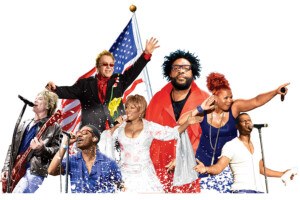Empire of the Rising Starr
Hausman’s model bears no resemblance to the remade diner downstairs from the SRO offices. The model is a dizzying orgy of nine separate eating areas and 300 seats, a dozen different patterns of carpet and tile and wallpaper, and a lotus-shaped pink-tiled private room with walls of fish tanks separating the VIPs from the main dining areas. It will reside next to Phillips Seafood, a location Howard likes for its potential to attract lunching families by day (“Mommy, Mommy, I don’t wanna eat fish!” he whines demonstratively), and Starr, naturally, hates. An architect makes the mistake of trying to explain how the Continental will appear “from the mall.”
“Ix-nay on the ‘all-may’ around the reporter … ” Starr jumps in.
Of course, the Pier at Caesars is a mall. At some point, Starr will take his restaurants to other malls. Continental and Buddakan will each have three locations by fall, and will begin to resemble chains. And it is doubtful Starr will have a chance in a year like this to work on his cool, candlelit, Lower East Side-style lounge.
Stephen Starr, for all his bravado and intrigue and the fact that the magazine you’re reading is, once again, dedicating several thousand words to him and his restaurant empire, does not initially appear to be a man of mystery. He makes no secret of his blue-collar Jersey roots, or his disdain for his competitors, or the fact that he is only doing this because he never made it in show business. He has no secret mob connections or secret City Hall fixers or secret, ahem, vices. He is open and easy and wry. He doesn’t seem to mind when I scan the track list of a CD a young woman has burned for him, which includes, if you really want to know, songs by Sting, Elliott Smith and Eva Cassidy.
But a few things about Starr have long been an enduring mystery. Namely: How does he do it? Where does he get the money? Won’t 18 restaurants put him in a perilous financial position? Who are his investors? Restaurant investors like brands, brands that can be expanded into chains — and Starr has 13 restaurants with 12 different brands. “He’s very concerned that he not look like a chain,” acknowledges Robkin, the venture capitalist. Chain restaurants all have the same menus, the same fixtures, the same ingredients and the same training programs — and, ideally, higher profit margins because of it. “Any analyst or investor looking at restaurants will start talking about P.F. Chang’s and Cheesecake [Factory],” says Restaurants & Institutions senior editor Allison Perlik, which is exactly what Robkin did, as if on cue, when I first called to discuss the long-term financial potential of the SRO. “I encourage you to consult the SEC filings of P.F. Chang’s and the Cheesecake Factory,” he said. “Restaurants as a sector have well outperformed the S&P 500. If you’d put all your money in restaurant stocks in 1998, you’d be in a much better place than anyone else.”


